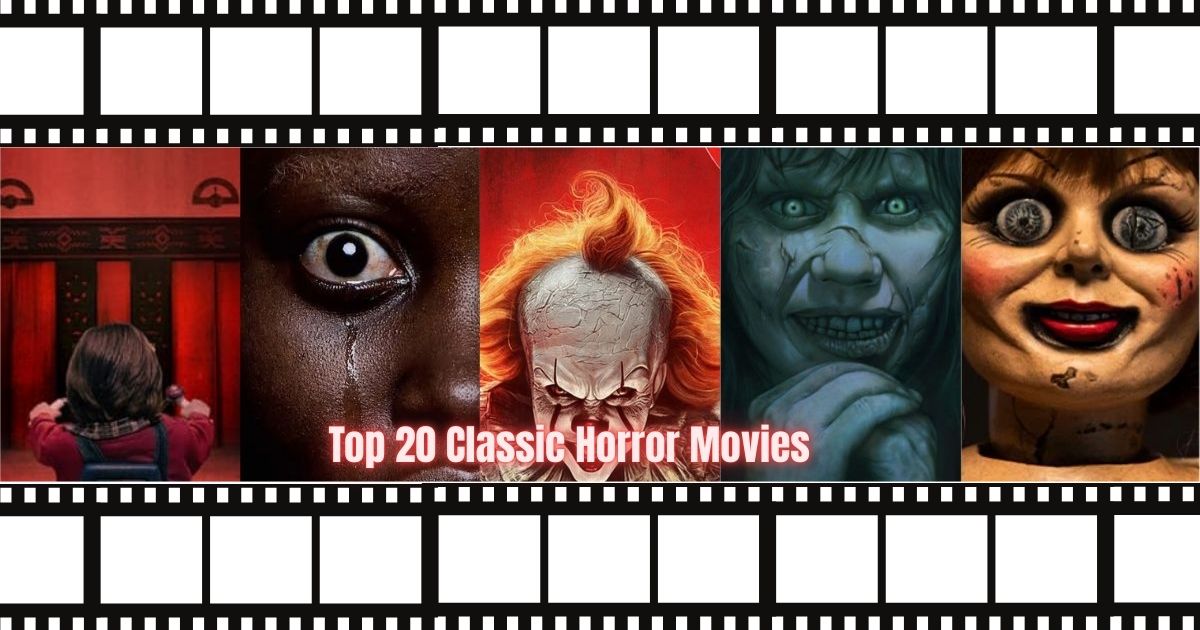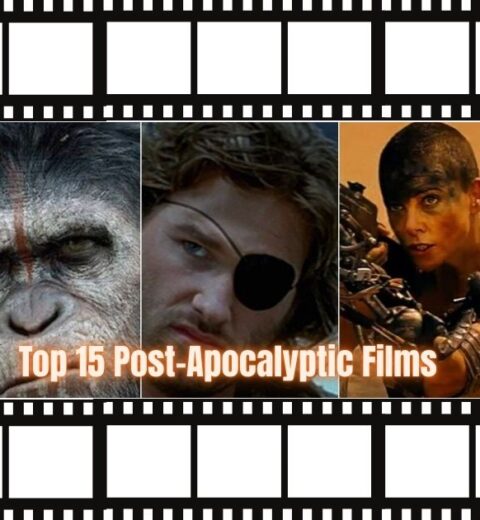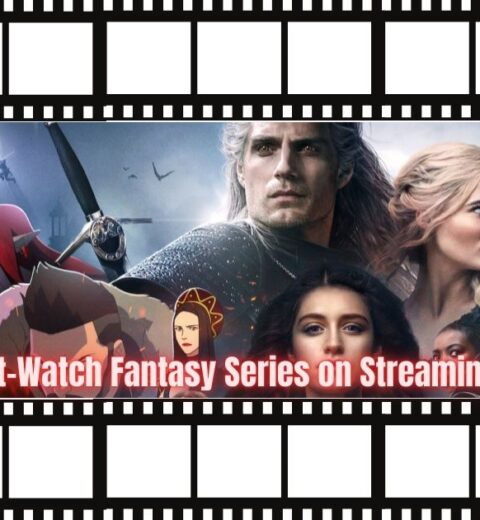For actors, filmmakers, and audiences alike, the horror genre is a timeless playground of human fear. While modern horror relies heavily on hyper-realistic gore and CGI, there’s an undeniable, chilling power in the classic horror movies-the films that pioneered the jump scare, mastered psychological dread, and defined the very shape of the genre.
These masterpieces don’t just shock; they burrow deep into our primal anxieties, proving that atmosphere, masterful storytelling, and iconic performances are far more terrifying than any digital effect. They are the cinematic heritage that every aspiring artist on Cast Artists should study, not just for the scares, but for the sheer craft of building unforgettable terror.
Here are the top 20 classic horror movies that continue to haunt audiences and influence filmmakers to this day.
The Pioneers: Psychological Dread (1920s – 1960s)
These early classics relied on shadows, atmosphere, and psychological manipulation to create fear. They are a masterclass in subtlety and suspense.
1. Psycho (1960)
Alfred Hitchcock fundamentally redefined the horror film with this masterful work. It’s a terrifying exploration of a disturbed psyche. The Bates Motel setting is a cornerstone of horror locations, and Anthony Perkins’ chilling portrayal of Norman Bates remains one of cinema’s most iconic performances. The film’s brilliant misdirection and shocking shower scene cemented the use of suspense and surprise in horror for decades to come.
2. The Exorcist (1973)
Often cited as the scariest movie ever made, The Exorcist transcends the horror genre with its deeply disturbing themes of faith, corruption, and the loss of innocence. The realistic special effects-especially Linda Blair’s transformation as the possessed Regan-were groundbreaking and remain genuinely unsettling. It’s an emotional gut-punch that deals with evil on a visceral, spiritual level.
3. Rosemary’s Baby (1968)
Roman Polanski’s film is a slow, building nightmare of urban paranoia. It’s less about jump scares and more about the suffocating dread of isolation and betrayal. Mia Farrow’s vulnerable performance as a woman who suspects her neighbours and husband are conspiring against her taps into profound anxieties about motherhood and trust. This film proves that horror can be terrifying even in the bright light of a New York City apartment.
4. Night of the Living Dead (1968)
George A. Romero didn’t just create a horror movie; he created an entire subgenre. This low-budget, black-and-white masterpiece redefined the zombie as a flesh-eating ghoul and infused horror with potent social commentary. The film’s claustrophobic farmhouse setting and bleak, shocking ending are a timeless reflection of societal breakdown.
5. Nosferatu (1922)
F.W. Murnau’s silent film, a chilling, unauthorized adaptation of Dracula, is a triumph of German Expressionism. Max Schreck’s Count Orlok, with his gaunt features and rat-like appearance, is the original cinema vampire. The use of shadow and distorted visuals creates an unnerving atmosphere that contemporary horror still borrows from.
6. The Haunting (1963)
Robert Wise’s adaptation of Shirley Jackson’s novel, The Haunting of Hill House, is the ultimate haunted house film that masters the art of showing nothing. The terror comes purely from sound, camera angles, and the fracturing minds of its characters. This is a must-watch for any actor wanting to understand how to convey fear when the threat is unseen.
7. Frankenstein (1931)
Boris Karloff’s sensitive yet monstrous portrayal of the creature is the heart of this Universal Classic. It explores profound themes of creation, rejection, and humanity. The film’s gothic atmosphere and Karloff’s unforgettable performance ensured this monster’s place as a cultural icon.
The Golden Age of Slashers & Supernatural Dread (1970s – 1980s)
This era introduced the relentless, masked killer and mixed psychological tension with visceral horror, reflecting the anxieties of a changing world.
8. The Shining (1980)
Stanley Kubrick’s psychological horror based on the Stephen King novel is a masterwork of creeping dread. Jack Nicholson’s descent into madness as Jack Torrance in the isolated Overlook Hotel is both frightening and mesmerizing. Its unsettling symmetry, impossible architecture, and iconic imagery (the twins, the blood wave) create an experience that is deeply, intellectually disturbing.
9. Halloween (1978)
John Carpenter perfected the slasher genre. Michael Myers is the embodiment of pure, motiveless evil-“The Shape.” With its simple premise, brilliant use of limited locations, and one of the most iconic horror scores ever composed, Halloween proves that less is often terrifyingly more.
10. The Texas Chain Saw Massacre (1974)
Raw, gritty, and unrelentingly bleak, Tobe Hooper’s film feels less like a movie and more like a disturbing documentary. It taps into a primal fear of isolation and encountering true, chaotic depravity. Leatherface and his cannibalistic family established a terrifying archetype of backwoods horror.
11. Alien (1979)
While also a sci-fi film, Ridley Scott’s masterpiece is essentially a claustrophobic haunted house movie in space. Its horror is physical, biological, and inescapable, culminating in H.R. Giger’s terrifyingly erotic and perfect organism: the Xenomorph. It’s a template for combining suspense with genuine monster movie terror.
12. The Thing (1982)
John Carpenter’s second entry is a masterclass in paranoia and practical effects. Set in an isolated Antarctic research station, the film’s terror comes from the terrifying realization that anyone could be the shape-shifting alien. The groundbreaking, visceral practical effects still look astonishingly gruesome today.
13. Carrie (1976)
Brian De Palma’s adaptation of Stephen King’s first published novel is a tragic horror story about a sheltered, bullied girl with telekinetic powers. It’s a powerful and deeply uncomfortable film that blends high school social terror with shocking supernatural violence. Sissy Spacek’s performance as Carrie White is heartbreaking and terrifying.
14. Jaws (1975)
Steven Spielberg’s creature feature established the modern blockbuster and made people afraid to go into the ocean. The brilliance of Jaws is in its suspense; the shark is barely shown for the first half, letting the audience’s imagination-fueled by John Williams’ iconic score-do the heavy lifting.
15. Poltergeist (1982)
A chilling suburban nightmare that suggests evil can invade the sanctity of the American family home through the most innocent of modern devices: the television. It’s a perfect blend of spectral terror, practical effects, and the ultimate fear of a child in danger.
Deep Cuts & Genre Defining Classics
No list of the best classic horror is complete without these essential, genre-defining works that influenced every scream that followed.
- Invasion of the Body Snatchers (1956/1978): A chilling allegory for conformity, where the horror is the loss of humanity and individuality.
- The Omen (1976): A supernatural thriller that plays on the parental fear of having an evil child.
- A Nightmare on Elm Street (1984): Wes Craven’s brilliant concept-a killer who attacks you in your dreams-made sleep itself a danger.
- Videodrome (1983): David Cronenberg’s unsettling body horror exploring the dark side of media and technology.
- Black Sunday (1960): Mario Bava’s visually stunning gothic masterpiece that brought new levels of explicit horror to the screen.
Your Role in the Next Generation of Terror
The magic of these classic films lies not just in their ability to scare, but in the talent that brought them to life-the actors who conveyed such raw fear, the writers who crafted compelling narratives, and the crew who executed groundbreaking practical effects.
If you are an actor, writer, director, or crew member passionate about continuing the legacy of powerful cinema, Cast Artists is the platform where you can find your next opportunity. We connect artists like you with production companies and filmmakers who are creating the next generation of masterpieces, whether they’re indie darlings or big-budget features.
Start building your professional profile today and connect with the industry that is defining the future of film.
For all services regarding film opportunities, casting, and portfolio building, please contact us:
- Email ID: info@castartists.com
- Contact Us: +91 9490056002



